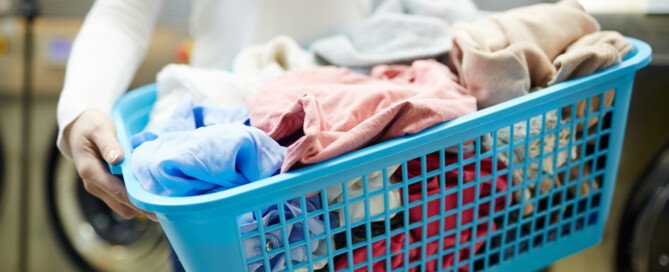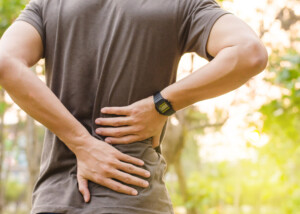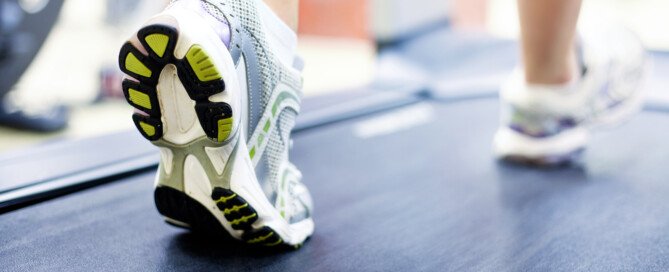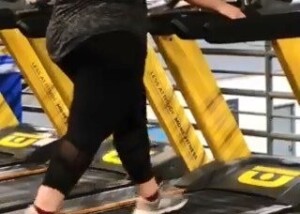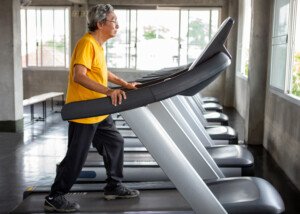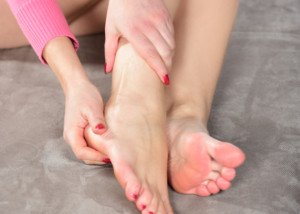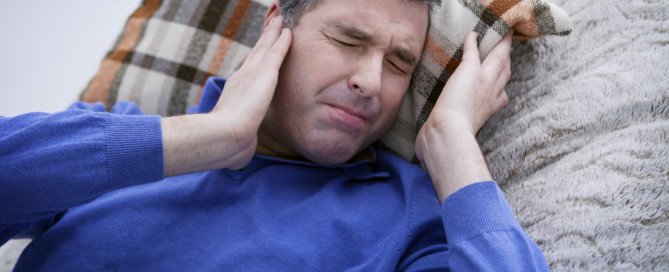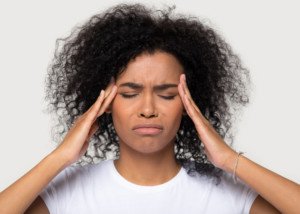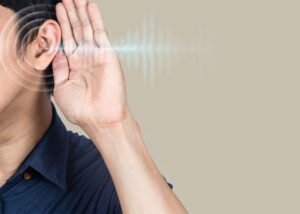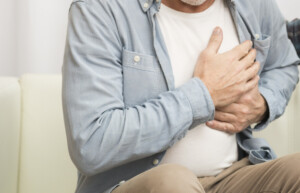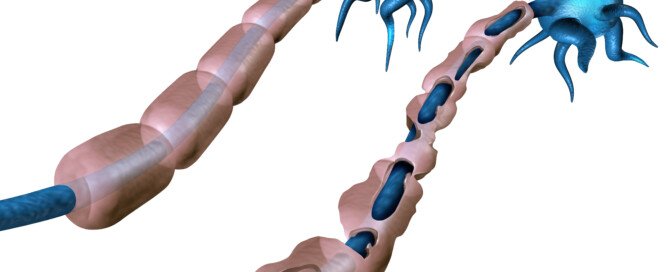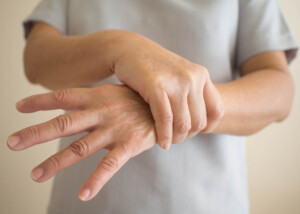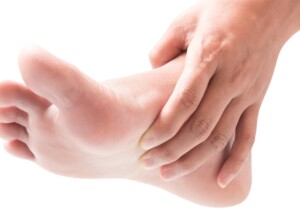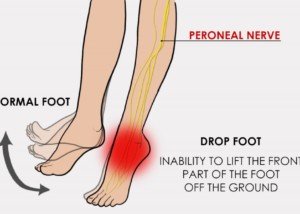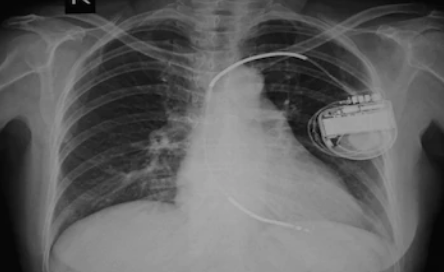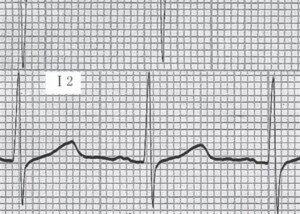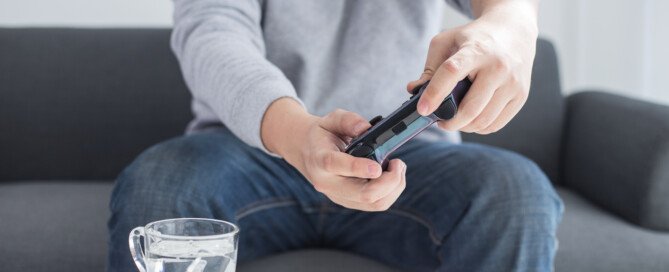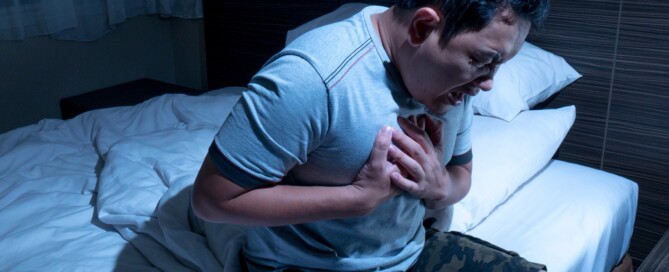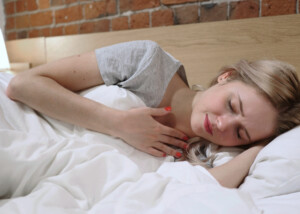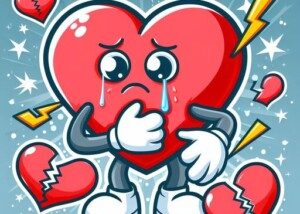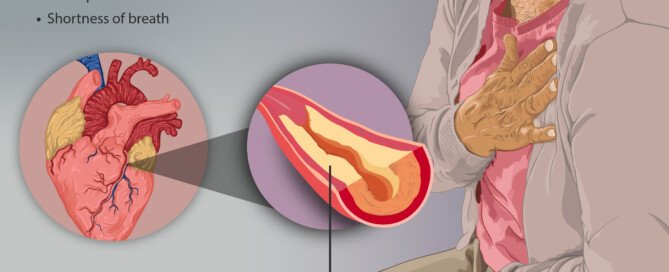Housework Guidelines Following Hip Replacement Surgery
Here are the complete guidelines specifically for housework following a hip replacement surgery – from an orthopedic surgeon.
“After a joint replacement, you can return to almost any reasonable activity of daily living,” begins Barbara Bergin, MD, board certified orthopedic surgeon at and co-founder of Texas Orthopedics, Sports & Rehabilitation Associates.
“So housework would be included in those activities.”
However, a very noteworthy component of housework activity needs to be mentioned.
And that is proper biomechanics.
Housework, like lifting weights at a gym, can be done with improper biomechanics, leading to an injury – most notably the so-called “throwing out of the back.”
Lugging around heavy items is not required to throw out one’s back or cause a low back strain.
Furthermore, the back isn’t the only body part that’s at risk for injury or strain from performing household tasks. The knee and hip joint, too, can end up in trouble.
Housework Guidelines After Total Hip Replacement Surgery
“Now, I would recommend that you figure out how to clean your house without getting down on your hands and knees,” says Dr. Bergin.
“Deep squatting can cause you to dislocate your total hip replacement, and most people who have total knee replacements are never able to get full flexion back in their new knee.”
“But mopping, sweeping and dusting are all fine. Try to find implements to help you reach difficult, low and high places.”
You should find more efficient ways of doing the chores that people with healthy hip and knee joints would think nothing of getting into a deep squat to do.
For instance, a deep squat is often done when one wants to reach towards the back of a low cabinet to pull out a pot.
People do deep squats to clean things close to the floor such as baseboards.
Even very brief tasks, such as catching a spider low to the floor, should not be done with a deep squat by a person with a hip (or knee) replacement.
The proper way to reach things close to the floor is to keep an arch in the lower back (don’t round the back, as this can put the small lumbar muscles at risk for strain), bend at the legs (but don’t squat) and simply reach to catch the spider or pick up the dirty socks, etc.
Extension tools are on the market to grasp items that you’re unable to reach.
As for a sustained reach, such as wiping baseboards – again, there are products that will extend to make the reach, eliminating the need to squat or uncomfortably maintain a bent trunk position.
The various tools that can eliminate straining to reach are “safer and better for the aging body,” says Dr. Bergin.
“You’ve had a hip or knee replacement. You don’t want to turn around the next year and have a rotator cuff repair.”

Dr. Bergin is a general orthopedist, surgically and conservatively treating all manner of bone and joint conditions. She enjoys educating patients so they can emerge stronger than they were before their orthopedic injury or surgery.
 Lorra Garrick has been covering medical, fitness and cybersecurity topics for many years, having written thousands of articles for print magazines and websites, including as a ghostwriter. She’s also a former ACE-certified personal trainer.
Lorra Garrick has been covering medical, fitness and cybersecurity topics for many years, having written thousands of articles for print magazines and websites, including as a ghostwriter. She’s also a former ACE-certified personal trainer.
.
Top image: Freepik.com
Can Treadmill Walking Cause Stress Fractures to the Foot?
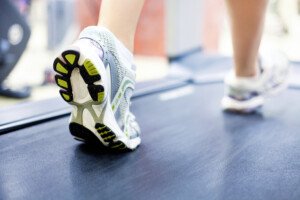
Who’d ever think that walking on a treadmill can cause stress fractures to the feet, but it actually can.
Does this mean that if you’ve never had a stress fracture in your foot, that you should give up walking on a treadmill as a pre-emptive move?
Of course not. You can still keep using this machine, but there are guidelines that you should adhere to, says Barbara Bergin, MD, board certified orthopedic surgeon at and co-founder of Texas Orthopedics, Sports & Rehabilitation Associates.
“Excessive treadmill walking, regardless of holding on or not, can result in stress reactions and stress fractures in the feet,” says Dr. Bergin.
The human machine was meant to walk a lot more than sit a lot. We are designed for lots of walking, as this is what our primitive ancestors had to do all day long to survive.
But people in ancient times took rests. Unlike herds of animals, humans did not trek continuously over miles of savanna without a break.
Treadmill vs. Natural Walking and Stress Fractures
“Remember, treadmill walking is not natural walking,” says Dr. Bergin. “There is almost no natural circumstance in which a person walks continuously uphill for an hour.”
Though people do this for exercise, the key words here are “natural circumstance.” Hunter-gatherers of the distant past as well as currently in certain parts of the world do not walk continuously uphill for an hour, nor do they walk nonstop on level ground for this long. They take ample breaks.
Granted, in some cultures there is continuous walking on country-type roads – to and from a place of work. Kids have been known to walk large distances to and from school in impoverished regions.
But just because such individuals typically do not develop stress fractures in their feet doesn’t mean that the treadmill is no different.
When we apply long-distance walking to the treadmill, things get different. This is why walking three hours nonstop on a treadmill is not an effective way to train for an outdoor walk-a-thon.
“And again, remember that it’s the surface that is moving,” says Dr. Bergin. “It alters the gait. I’ve been seeing an uptick in stress fractures and stress reactions in the feet in patients who do a lot of walking and running on a treadmill.
“I think this is because in Texas, the heat is really prohibitive in terms of running outside during daylight hours.”
Should You Give up Walking on a Treadmill out of Fear of Foot Stress Fractures?
Dr. Bergin advises, “I recommend alternating treadmill with regular walking. And slow down on the treadmill. Diminish the inclination as well.”
It’s understandable when using a treadmill is much more convenient than exercising outside due to weather or time of day.
But when you can, you’ll actually get a more efficient workout if you walk outside.
One of the reasons for the increased efficacy is that you won’t be tempted to hold onto anything.
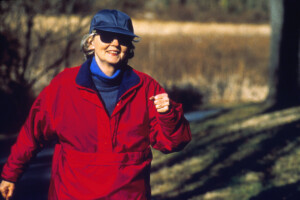
cancer.gov/NCI
Whereas on a treadmill, the temptation to hold on is overwhelming for many users including young, very able-bodied people.
The mindset for many is that if the rails and front bar are there, you should hold onto them.
Momentarily holding on to steady yourself while drinking water or turning to talk to someone, or to get a heart rate reading, is not the same as continuous holding on.
Keeping your hands continuously on the machine adversely alters gait mechanics and posture.
This includes the natural foot-strike on the tread surface. So even though a hands-free walk of excessive lengths of time can put certain individuals at higher risk of stress fractures, holding onto the treadmill will further raise this risk.
Don’t think for a second that holding onto the machine will lower the risk of developing any kind of stress fracture!
What is a stress fracture?
It’s a tiny crack in a bone, though the bone remains in place. The foot has many small bones that can develop one of these little cracks.
No cast is needed for healing. It heals with rest and avoidance of the offending activity.
Most people who walk on a treadmill will not develop a stress fracture, especially if they wear supportive footwear.
But avid users of this equipment should be interested in knowing what may happen with excessive use.

Dr. Bergin is a general orthopedist, surgically and conservatively treating all manner of bone and joint conditions. She enjoys educating patients so they can emerge stronger than they were before their orthopedic injury or surgery.
 Lorra Garrick has been covering medical, fitness and cybersecurity topics for many years, having written thousands of articles for print magazines and websites, including as a ghostwriter. She’s also a former ACE-certified personal trainer.
Lorra Garrick has been covering medical, fitness and cybersecurity topics for many years, having written thousands of articles for print magazines and websites, including as a ghostwriter. She’s also a former ACE-certified personal trainer.
.
Top image: Shutterstock/YanLev
What’s this Random Thumping in My Ear Like a Moth Flying Around?
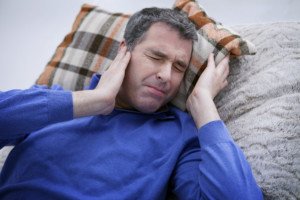
Do you hear something thumping or fluttering around inside your ear, like a tiny moth flapping its wings?
The good news is that you probably don’t have an actual moth inside your ear, if for no other reason, it wouldn’t fit, let alone have room to fly around.
You also probably don’t have any other type of flying creature inside your ear.
On the other hand, something definitely is causing what you hear to be a little bug inside your ear batting its wings.
You may hear it more than you feel it.
Or, you may feel it more than you hear it. And it is driving you batty.
Cause of Thumping Inside Your Ear that Comes and Goes
“Random thumping in the ear is most likely caused by small spasms (myoclonus) or twitching in some small muscles in and around the ear or soft palate (specifically, the tensor tympani or stapedius muscles),” says Gene Liu, MD, MMM, President, Chair, Department of Surgery; Chief, Division of Otolaryngology, Cedars-Sinai Medical Group.
If this comes as a shock to you, it’s perhaps because you didn’t know that there are muscles inside your ear or that the soft palate actually has muscles.
“Myoclonus of the soft palate can also result in similar symptoms,” says Dr. Liu.
“When these muscles go through periods of spasm (much like when your eyebrow sometimes twitches), they can move the ear bones and/or change the pressure in the middle ear and lead to fluttering of the eardrum. This is what results in the sounds in the ear.
“These conditions can be really frustrating and annoying, but are almost always nothing to be concerned about.”
Tinnitus: Hearing Noises Inside Your Ear
Technically, this experience is a form of tinnitus.
Tinnitus is the term for hearing sounds inside the ear.
The most common form of tinnitus is the so-called ringing type, or a noise that’s described by patients as hissing, buzzing, a very high pitch steady tone, or something like a continuous “ssssssssss.”
Others describe their tinnitus as a crackling, static-like or tinkling sound.
And then there are those who have the “whooshing” type of tinnitus.
Sometimes this sound is described as a rhythmic “whoosh, whoosh” that’s in synch with their heartbeat.
The tinnitus that’s caused by inner ear or soft palate muscle twitching or spasms would be called a thumping type of tinnitus, like “something is flapping its wings inside my ear.”
Can the Thumping “Moth” Inside Your Ear Be Stopped?
Dr. Liu says, “If the symptoms continue more than a few weeks, I would recommend seeing an ENT physician or neurologist in order to be evaluated and to potentially explore treatment options.”
One treatment option may be supplemental magnesium citrate in powder form. This mineral helps relax muscles that are prone to spasm or twitching.
If you have no other symptoms such as new-onset hearing loss, pain in or near the ear or issues with balance or dizziness, you certainly don’t have to lose sleep over wondering if you have a brain tumor or serious neurological disease.
Hearing thumping inside your ear may make it tempting to stick your finger or a Q-tip in there to put an end to it.
But do not do that. You might accidentally insert the object far enough to damage the eardrum.
 Dr. Liu’s clinical areas of focus cover a broad range including surgery of the head and neck, sinuses and thyroid, and disorders of the ears, salivary glands and vocal cords.
Dr. Liu’s clinical areas of focus cover a broad range including surgery of the head and neck, sinuses and thyroid, and disorders of the ears, salivary glands and vocal cords.
 Lorra Garrick has been covering medical, fitness and cybersecurity topics for many years, having written thousands of articles for print magazines and websites, including as a ghostwriter. She’s also a former ACE-certified personal trainer.
Lorra Garrick has been covering medical, fitness and cybersecurity topics for many years, having written thousands of articles for print magazines and websites, including as a ghostwriter. She’s also a former ACE-certified personal trainer.
.
Top image: Shutterstock/Image Point Fr
Why Your Heart Races and You Feel Anxiety After a Big Meal
It may happen soon after a big meal or a few hours after: a racing heart well over 100 beats per minute and lots of anxiety.
You may have connected the dots early on, or it may have taken awhile, but you now know it for sure:
There is something about eating a heavy meal – whether carb loaded or fat rich – that ridiculously speeds up your pulse and leaves you full of anxiety.
Initially, the anxiety is not from worrying why your heart rate is going at warp speed. In fact, you typically begin feeling anxious but do not know why.
And then you realize that your heart is speeding away like a freight train.
These two symptoms are quite noticeable you’re at rest, such as using a computer or watching TV.
And not long before, you had devoured a ton of carbs. Maybe there was some fat in there too.

Postprandial Tachycardia: Heart Races Soon After Eating a Lot of Food
“Postprandial tachycardia simply means a rapid heart rate after eating,” says Morton Tavel, MD, Clinical Professor Emeritus of Medicine, Indiana University School of Medicine, and author of “Health Tips, Myths, and Tricks: A PHYSICIAN’S ADVICE.”
Dr. Tavel explains, “The type of ‘tachycardia’ described is usually called ‘sinus tachycardia,’ which refers to the ordinary type of rapid heart rates that exceed 100 beats/minute and accompanies such mundane activities as exercise and anxiety.
“After eating a meal, the heart rate may increase a bit in response to the stress imposed by a large meal because digestion demands about a 30% increase of cardiac output, but seldom does the heart rate rise to exceed 100/min.”
Heart Rate Exceeds 100 Beats Per Minute After Eating a Heavy Meal
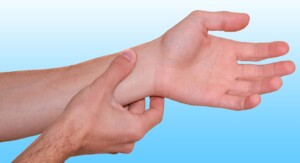
However, for some individuals, their heart rate soars over 100, even 120 beats per minute.
Are these out of shape, sedentary people who smoke and drink and wouldn’t know a green salad if it smacked them in the face?
Actually, according to a Fitbit thread, there’s a lot of postprandial tachycardia going around among avid exercisers – and well over a hundred beats a minute.
It’s not that exercise enthusiasts are prone to this situation.
But rather, they are more likely to be very aware of what’s going on with their bodies – more in tune with their vitals – than would be a person who’s not health-conscious. They are more likely to notice something unusual.
In addition to the pulse speeding up to conduct the work of digestion, a few other things are going on.
When you eat a lot at one sitting, there’s usually a high amount of carbs. A lot of calories at once, regardless of macronutrient ratios, will make the heart work harder to support the digestive process.
But a whopping slug of carbohydrates will shoot up the blood sugar levels. This triggers insulin production from the pancreas to shuttle the blood sugar (glucose) to muscle cells – for their fuel.
The pancreas may overreact to a big meal by secreting too much insulin. This results in glucose levels that are lower than desirable.
For some individuals, even fitness enthusiasts, their glucose level may dip low enough to change the hormonal environment of the body.
Stress hormones are released. These fire up the sympathetic nervous system. This is the same system that’s stimulated when you’re faced with a perceived threat: the fight or flight response.
- The “threat” may be a true threat such as hearing a window in your house suddenly shatter in the middle of the night.
- Or, it may be your boss at work – who has it in for you – summoning you to his office.
When the body shifts into fight or flight mode, the heart rate accelerates, senses are heightened, blood pressure rises and there’s that edgy feeling of suspense.
These responses help prepare the body for a fight or escape from danger.
This cascade of hormonal reactions to the initial insult of all that blood sugar result in two very noticeable symptoms: a very elevated heart rate and an edge-of-the-seat anxiety.
What to Do if Big Meals Make Your Heart Race Like a Thoroughbred
“It is possible that in rare instances, meals may trigger ‘ectopic’ tachycardias, which are abnormal forms of heart rhythm disorders,” says Dr. Tavel.
“And if heart rates are excessively fast, say, greater than 120, one should seek specialized care from a physician versed in cardiac conditions.”
Next time your heart rate blasts out of orbit after chowing down a large amount of food, calmly feel your pulse.
Though it’s very fast, is it a steady fast or does it seem to be erratic and unable to make up its mind?
Other symptoms such as faintness or chest pain?
A steady pulse in the absence of other physical symptoms is more reassuring than an erratic heartbeat, especially with other symptoms.
Nevertheless, even if your heart rate gradually calms down in a predictable way at some point after eating, you should mention this to a cardiologist just to be sure you are doing quite fine.
The anxiety, though caused by the activation of the sympathetic nervous system, is also reinforced by the realization that your heart rate is way over 100.
Next time you’re in the mood to gorge on more food than you need at one sitting, practice portion control.

Dr. Tavel’s medical research includes over 125 publications, editorials and book reviews in peer-reviewed national medical journals. He was formerly director of the cardiac rehabilitation program at St. Vincent Hospital in Indiana. mortontavel.com
 Lorra Garrick has been covering medical, fitness and cybersecurity topics for many years, having written thousands of articles for print magazines and websites, including as a ghostwriter. She’s also a former ACE-certified personal trainer.
Lorra Garrick has been covering medical, fitness and cybersecurity topics for many years, having written thousands of articles for print magazines and websites, including as a ghostwriter. She’s also a former ACE-certified personal trainer.
.
Top image: Freepik.com
Source: community.fitbit.com/t5/Eat-Well/HR-users-Increased-heart-rate-after-eating/td-p/927029
Different Kinds of Spasticity in Multiple Sclerosis
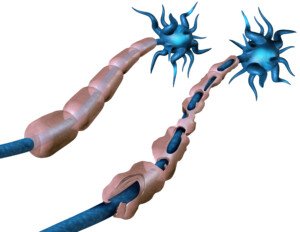
The spasticity of multiple sclerosis doesn’t come in just one flavor.
MS is an autuimmune disease involving the damage of the protective myelin sheath around nerve fibers and cells in the spinal cord and brain.
When this sheath is damaged, a disruption of nerve signals between the brain and muscles results.
Over time, the damage can be permanent (scarring or sclerosis) and in multiple areas involving the nervous system.
The disease, however, may also go into remission for very long periods, during which the patient can do hard gym workouts, do 10K’s and even go ice climbing.
One of the symptoms of MS is a prolonged contraction of muscles. This is called spasticity.
Different Ways MS Spasticity Presents
“Spasticity can come in a ‘variety of flavors’ with MS,” says Mitzi J. Williams, MD, clinical neurologist with Morehouse School of Medicine, an MS specialist and clinical advisor for the Multiple Sclerosis Foundation.
Dr. Williams explains, “People can have tightness of the muscles that feels like a rubber band, cramping like ‘Charlie horses, or a spasm that can actually make the extremity jerk or kick.
“Sometimes they can also have extensor or flexor spasms where the extremity will get ‘stuck’ in a cramp when they try to flex or extend it.
“Example, someone will try to kick their leg out [such as extending it while in an airplane seat], and it will go into a spasm, and the leg will stay straight and take seconds to minutes to relax.
“Clonus is a severe form of spasticity where the muscles usually of the foot can jerk involuntarily when placed in certain positions.
“This is usually alleviated when they change the position of the foot.”
How to Treat Spasticity from MS
Dr. Williams exlains, “Spasticity can be treated in a variety of ways. You can add regular stretching including yoga into your daily routine.”
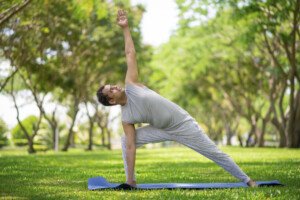
Freepik.com, katemangostar
“Also, you can work with you doctor to see if physical therapy or medications would be of benefit to help the symptoms.
“It is also important to be aware that certain conditions like extremes of temperature, fever or infection, and fatigue can temporarily make spasticity worse.”
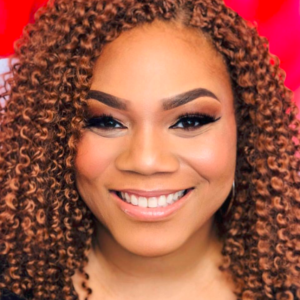
Dr. Williams is author of “MS Made Simple: The Essential Guide to Understanding Your Multiple Sclerosis Diagnosis.” She is a member of the American Academy of Neurology.
 Lorra Garrick has been covering medical, fitness and cybersecurity topics for many years, having written thousands of articles for print magazines and websites, including as a ghostwriter. She’s also a former ACE-certified personal trainer.
Lorra Garrick has been covering medical, fitness and cybersecurity topics for many years, having written thousands of articles for print magazines and websites, including as a ghostwriter. She’s also a former ACE-certified personal trainer.
.
Top image: Shutterstock/Lightspring
Why Don’t All People with Long QT Syndrome Have an ICD?
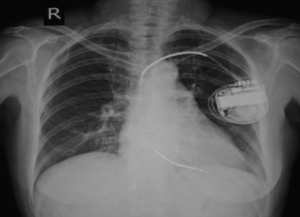
An ICD is implanted into patients with long QT syndrome to recharge the heart should it go into sudden cardiac arrest.
So why aren’t ALL people with long QT syndrome given this implantable cardioverter device? (more…)
Why Playing Computer Video Games Makes Your Heart Pound
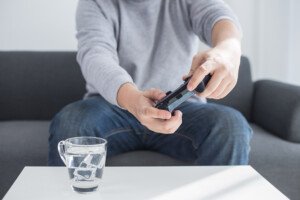
Do you find that nearly every time you sit down to play a video game on your computer, it isn’t long before you can feel the pounding of your heart? (more…)
Feeling Pulse in Finger Wherever You Press It: Is this Normal?
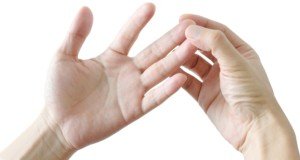
Have you noticed that sometimes, when your index or middle finger is against ANY part of your body, you feel a pulse—and you realize that this heartbeat is emanating from your fingertip? (more…)
Can Sleep Apnea Cause Chest Pain at Night?
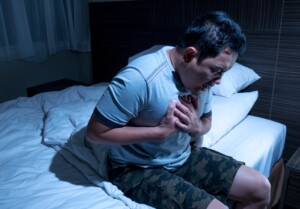
If you’re having chest pain at night in bed, it sure would be more reassuring to know it’s from sleep apnea than a heart attack or heart disease.
Those who’ve never been tested for sleep apnea may by lying there, feeling the pain in their chest, trying to come up with less serious explanations than a bad heart.
One of those that might cross their mind is sleep apnea. It causes immediate symptoms such as gasping for breath overnight, as witnessed by others, as well as being awakened repeatedly by a choking sensation.
“Obstructive sleep apnea (OSA) is caused by complete or partial obstructions of one’s upper airway — there are repetitive episodes of shallow or stopped breathing during sleep, correlating with reductions of blood oxygen saturation,” says Morton Tavel, MD, Clinical Professor Emeritus of Medicine, Indiana University School of Medicine, and author of “Health Tips, Myths, and Tricks: A PHYSICIAN’S ADVICE.”
“These episodes of decreased breathing, called apneas (literally, ‘without breath’), typically last 20 to 40 seconds. OSA is almost always accompanied by snoring.
“Resulting symptoms during the daytime consist of excessive sleepiness and fatigue.”
In addition to those, the person with untreated OSA may suffer from irritability, impaired concentration and frequent napping that fails to recharge him – or her.
Morning headaches that vanish soon after getting up for the day are another well-documented symptom of untreated sleep apnea.
But can OSA cause chest pain, whether during the day or night?
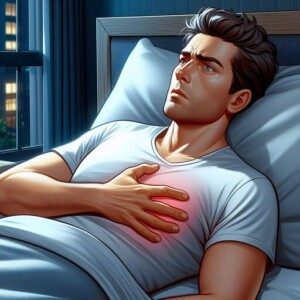
©Lorra Garrick
“Individuals suffering from this disorder are often obese, have high blood pressure and commonly have heart disease,” continues Dr. Tavel.
“Although the heart disease, in itself, may cause chest pain described as angina, the OSA is not associated with this symptom.”
A paper in Mayo Clinic Proceedings (Loui et al, March 1994) describes the case of three obese people who were experiencing chest pain at night (and during the day though less prominently) – along with episodic shortness of breath and perceived heart palpitations.
A sleep study revealed severe OSA in all three of these subjects. But a catheter angiogram of their coronary arteries revealed less obstructive plaque buildup as would be expected for the degree of their reported symptoms.
The study authors could only conclude that when patients report chest pain, their doctor should pursue the possibility of sleep apnea by inquiring if the patient snores and suffers from excessive daytime grogginess.
The authors were not able to definitively affirm that untreated OSA directly causes chest pain.
Remember, the patients were obese and already had plaque buildup. The possibility that acid reflex overnight or during the day, as the cause of the chest pain, was not investigated.
Chest Pain and Untreated Sleep Apnea
• Untreated OSA is a risk factor for problems with the heart that can cause chest pain: coronary artery disease, chronic heart failure and atrial fibrillation.
• Thus, it wouldn’t be surprising if someone with bouts of nighttime chest pain is found to have both OSA and one of the three cardiac conditions mentioned above.
• Though obesity is a major risk factor for OSA, it’s not the only risk factor. This is why thin people, including women, can have this often misdiagnosed condition.
For example, a naturally small airway, excess pharyngeal tissue and/or large tongue base can cause an obstruction during sleep, when these tissues are very relaxed, leading to apnea.
• The episodes of ceased breathing overnight cause internal disruptions such as reduced blood oxygen and increased heart rate and blood pressure, but these would not cause chest pain.

Dr. Tavel’s medical research includes over 125 publications, editorials and book reviews in peer-reviewed national medical journals. He was formerly director of the cardiac rehabilitation program at St. Vincent Hospital in Indiana. mortontavel.com
 Lorra Garrick has been covering medical, fitness and cybersecurity topics for many years, having written thousands of articles for print magazines and websites, including as a ghostwriter. She’s also a former ACE-certified personal trainer.
Lorra Garrick has been covering medical, fitness and cybersecurity topics for many years, having written thousands of articles for print magazines and websites, including as a ghostwriter. She’s also a former ACE-certified personal trainer.
.
Top image: Shutterstock/airdone
Source: ncbi.nlm.nih.gov/pubmed/8133662
Can the “Good Cholesterol” HDL Ever Be Too High?

Can too much of a great thing ever be bad – at least when it comes to HDL cholesterol?
This is the “good” cholesterol that’s supposed to be high. But if it’s as high as a kite, does that mean more good or harm? (more…)

